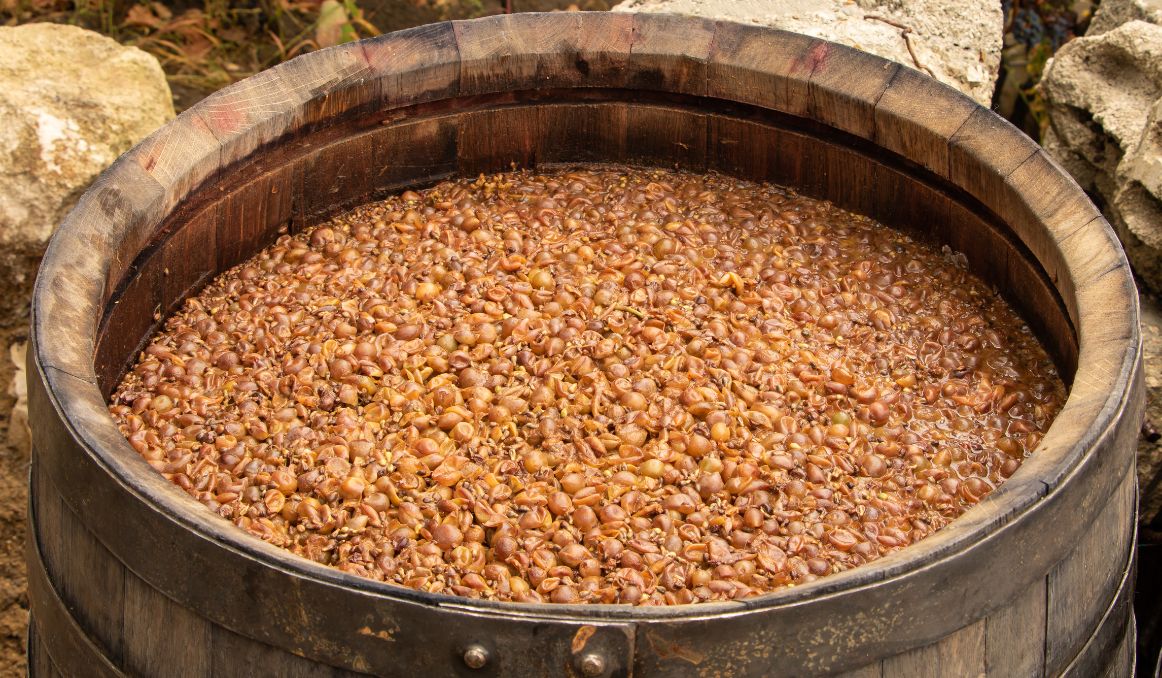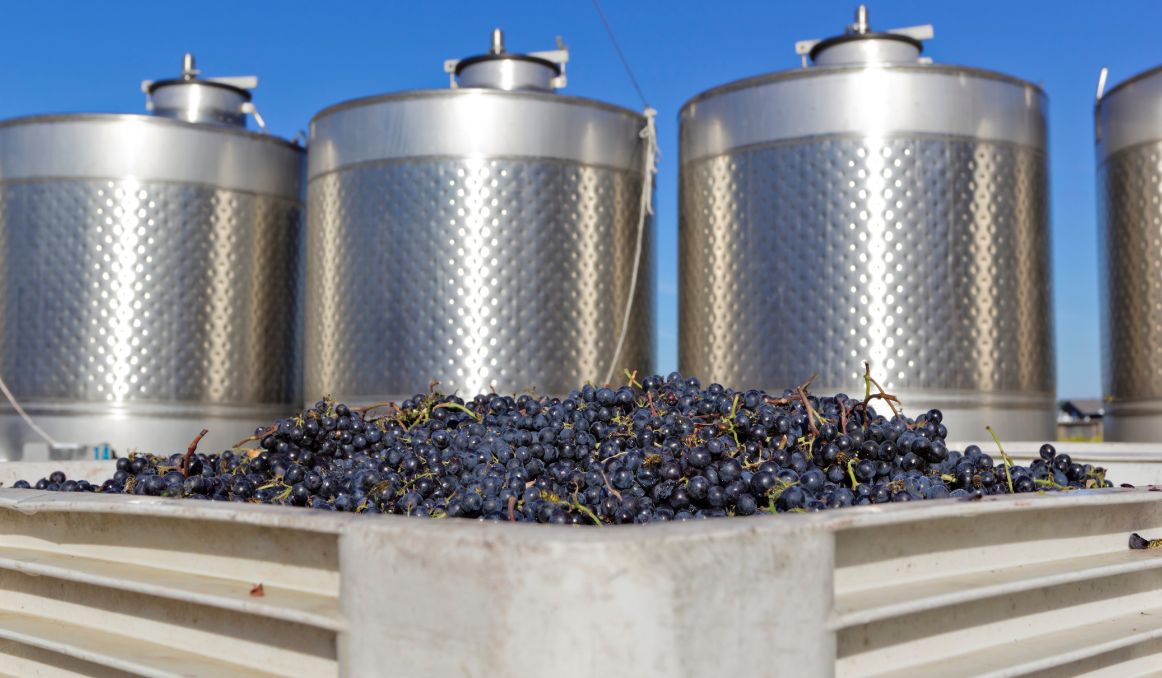How to Stop Wine from Fermenting
It’s not a question you get often. Most vintners are wondering how to get fermentation going, not how to stop it.
But it is one that matters in the making of wine.
Why?
Because wine that ferments all the way to its natural stopping point will be a very dry wine, while wine that is stopped at some point during fermentation will be less dry and sweeter.

Sweet or Dry Wine
To understand the level of sweet or dry in wine, it is critical to understand the fermentation process.
With wine, fermentation is very straightforward, as it has been for millennia.
A winemaker will typically harvest a specific strain of grape for wine, usually on the sweeter side, so it has more sugars.
The grapes will then be harvested and crushed, releasing all the juices from grapes into the crushing vessel. Often, all of the grape sediment is also left in the juice to allow total release of the tannins and polyphenols in the grape skins, which are not only really good for you, but also add to the flavor and aroma of the wine.
Finally, yeast is either added or allowed naturally to attract to the must (the grape juice and crushed grapes).
At this point, fermentation begins.
Yeast
Remember, yeast has one job, and only job only: to convert sugar to ethanol (alcohol) and carbon dioxide (bubbles).
Yeast is very good at its job, and it has been for millions of years.
Yeast is spectacularly good at reproducing and surviving; it can reproduce both sexually and asexually; it can survive in virtually any environment and almost any temperature; yeast only dies off as a result of too much alcohol or too hot a temperature (above 120 degrees Fahrenheit); yeast is all around us, on us, and in us.
Left to its own devices, at a steady temperature above 60 degrees Fahrenheit, yeast will continue to ferment, consuming all the sugars in the must until they are completely gone and only alcohol and carbon dioxide remain.
If the wine is fermenting in open air, the carbon dioxide will lift out of the wine into the air, and you will have a flat wine.
You can also ferment in an airtight container and have a bubbly, sparkling wine.
Dry Wine Is Fully Fermented
That process is precisely the one undergone for a dry wine.
A dry wine is one that has all the sugars converted to alcohol. Indeed, winemakers will even add more yeast to wine to get the driest possible drink they can.
To that end, dry wines are also typically higher in alcohol content. Remember, the more time the yeast is allowed to ferment, the more sugars are converted to more alcohol.
Sweet Wine Means Stopping Fermentation
Conversely, then, sweet wine means that fermentation has been stopped.
You might think that sweeter wines have sugar added to them, but think about it, even if you add more sugar, the yeast will simply convert that sugar to alcohol as well, so you will only end up with a higher alcohol content wine, which, sure, may be a bit sweeter, but it will likely be a sticky sweet dessert wine, not a lighter, bubblier, sweet wine.
To get a genuinely sweet wine, you will need to stop fermentation before the wine dries out.
Stopping Fermentation
A few different ways exist to stop fermentation.
The most natural way is cold shock.

Cold Shock
Cold shock is when you lower the temperature of your wine to lull the yeast to sleep.
It is also a great way to preserve the yeast so you can repitch later and not waste a batch of perfectly good yeast.
The cold shock process is as follows:
Harvest and crush your grapes and allow the skins to sit and stew for 24 hours. Then remove all solid material so you have only liquid. Then add yeast.
Next, allow your must to ferment in a fairly cool room, around 50 degrees Fahrenheit, so the must will ferment slowly. After about 5 days, primary fermentation will usually have stopped. You can tell because all of your yeast sediment will have settled to the bottom,
At this point, where you would typically move to secondary fermentation, you want to cold shock your wine.
First, rack your wine, moving it to a new sanitized container, and filter out all the yeast sediment, saving it for another batch.
Next, move your vessel into a room with a temperature below 40 degrees Fahrenheit but above 22 degrees. You don’t want your wine to freeze because that will separate the alcohol from the juice and kill a lot of your flavor and aroma.
Leave your wine in that colder room for another couple of days.
Finally, rack the wine again, moving to a new sterilized container and filtering out any remaining yeast sediment.
Now you can leave your wine to settle at room temperature for about a week, checking on it daily.
If fermentation kicks in again because you missed some yeast, you can simply repeat the cold shock process.
Cold shocking is the best way to stop fermentation because it will allow for the maximum natural flavor and aroma profile to be preserved.
Add Alcohol
Another way to stop fermentation is to add alcohol.
Note that this will dramatically affect the end result of your wine.
This type of wine is called “fortified,” and it typically involved adding a grape distilled spirit or brandy.
It works because excessive alcohol kills yeast.
To stop fermentation by adding alcohol, you will simply allow for primary fermentation to take place, and then when you rack your wine the first time, and you will add alcohol to kill off any remaining yeast in the wine.
You will end up with a high ABV wine that is a bit on the sweeter side.
In the end, you can experiment with the various ways to stop fermentation, just remember the point is to have a lower alcohol content, sweeter wine, and the primary means of doing that is to kill or remove the yeast.
Cheers!
Passionate about the beer and/or wine making process? So are we! If you’re interested in finding out how you can use our technology to control fermentation and monitor your yeast, save work hours and improve the cost-efficiency of your business, drop us a line at [email protected] or check out our product pages:
- Oculyze BB 2.0 (Better Brewing) Yeast Cell Counter App + Hardware
- Oculyze FW (Fermentation Wine) Yeast Cell Counter App + Hardware
Also, you can now get access to a fully functional demo account to test our Web App. Completely free of charge and with no commitment to purchase.
Sources:
- https://coastalwinetrail.com/how-to-stop-wine-fermentation/
- https://winemakermag.com/article/stopping-fermentation
Never miss a beat and get real time updates with a new article each workday by subscribing our social media channels.
Instagram | Facebook | Twitter | YouTube


